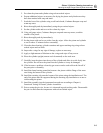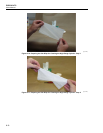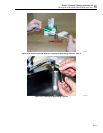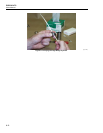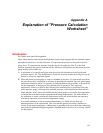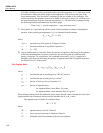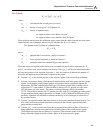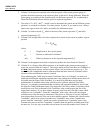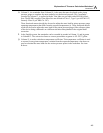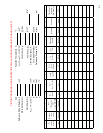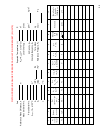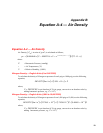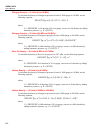
Explanation of "Pressure Calculation Worksheet"
Introduction A
A-5
O. Column 11, the remainder from Column 10, is the mass that must be placed on the piston
pressure gauge to complete the mass needed to set the desired pressure. This "remainder",
recorded in Column 11, is realized with the Trim Mass set provided with all RUSKA Mass
Sets. The RUSKA supplied Trim Mass Sets are defined as Class 3, Type 1 (per ASTM E617,
formerly Class S1 per NBS Cir. 547).
These fractional masses should also be used to adjust the mass load for piston pressure gauge
operating temperatures that differ from the expected temperature (t). These fractional masses
could also be used to adjust the mass load for the piston pressure gauge if the reference plane
of the device being calibrated is at a different elevation than planned in the original head
correction.
P. In the English system, the remainder can be recorded in pounds in Column 11, and in grams
in Column 12. The conversion factor to convert pound mass to grams is 453.59237 g/lbm.
Q. Column 13 is used to calculate a temperature coefficient. This temperature coefficient is used
to correct for any piston temperature variation from the expected temperature value that was
used to calculate the mass loads for the various pressure points in the worksheet. See item
B above
.



